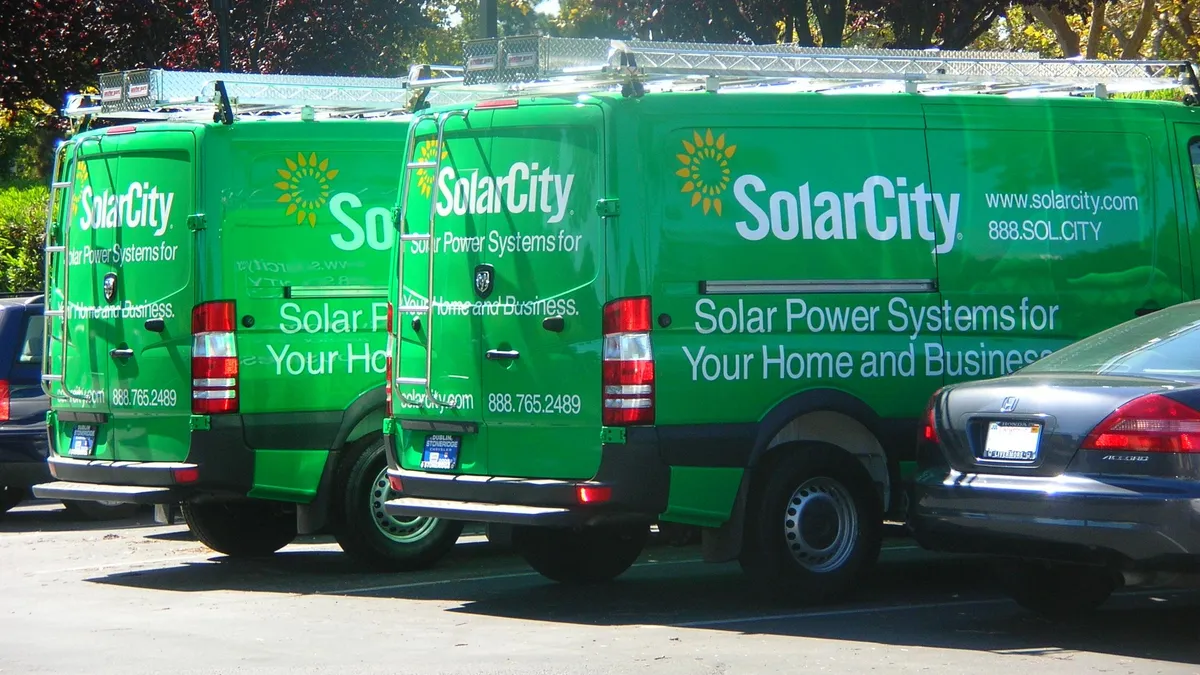Dive Brief:
- SolarCity, the leading U.S. residential solar installer, announced in its third-quarter (Q3) 2015 Securities and Exchange report that it will replace the focus on growth that brought it about a third of the residential market with efforts to cut costs and turn its cash flow positive by the end of 2016, PV Magazine reports.
- SolarCity installed 203 MW of residential solar in Q3 2015, a 69% increase ofver the same period last year, but CEO Lyndon Rive said the company will target only 40% growth in 2016. The new focus on cost will aim to decrease the company's current installed cost of $2.84/watt to below $2.50/watt by 2017.
- Rive said the new strategy is intended to ensure SolarCity will hold its market leadership after the 30% federal investment tax credit reverts to its pre-2006 levels — 10% for commercial solar investors and nothing for residential solar investors.
Dive Insight:
With the ITC's deadline looming, SolarCity is taking steps to maintain its secure hold on its market share after nine years of booming growth.
SolarCity’s total Q3 2015 installed solar was 256 MW, with 53 MW coming from its commercial solar installation business. The company had forecast 260 MW total for the quarter, and the 53 MW from its commercial business amounts to a 202% growth in that sector from Q3 2014.
The company’s historic focus on growth allowed it to grow its installations 80% to 90% per year and to use that increasing volume to drive down its installed cost. The installed cost was $3.26/watt in Q3 2013, $2.89/watt in Q3 2014, and is $2.84/watt now.
To help push it to $2.50/watt, SolarCity said it's also on schedule to ramp up production from its upstate New York gigafactory during the first half of 2016.
The company reported an unlevered internal rate of return of 12% in Q3 and an economic value creation of $239 million, or $2.45 per share, in the third quarter. SolarCity netted some $114 million in revenue, lost $191 million in operations, added 298,000 customers and ended the quarter with $418 million in available cash.
Correction: An earlier version of this article stated that the ITC will step down to 10% for residential investors, and nothing for commercial solar buyers. That is incorrect. Without an extension, it will decrease to 10% for commercial investors, and nothing for residential buyers.













